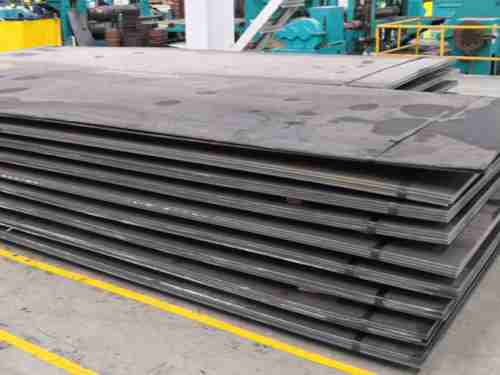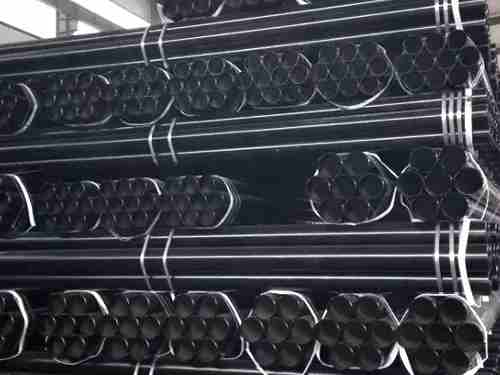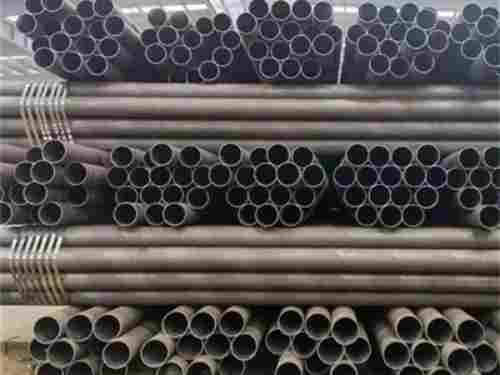ERW rectangular tube is a rectangular steel section produced through the high-frequency electric resistance welding (ERW) process. It combines the cost-effectiveness of welded pipes with the superior structural properties of rectangular sections, making it widely used in construction and engineering.
- Manufacturing Processof ERW Rectangular Tube
The production steps are similar to those of ERW square tube:
A steel strip (coil) passes through forming rollers, bending into a circular tube blank.
High-frequency current (skin effect + proximity effect) rapidly heats the edges of the strip.
Under pressure from squeeze rollers, the molten edges fuse together to form a weld.
Burrs on the inner and outer weld are removed by scrapers.
The pipe is cooled, sized, and calibrated for accuracy.
Using special rolling dies, the round tube is gradually shaped into a rectangular or square section.
Precise control ensures sharp angles, straight edges, and uniform geometry.
- Key Featuresof ERW Rectangular Tube
Excellent cross-sectional performance – Different inertia values along two axes allow efficient resistance to bending in specific directions, enabling optimal material utilization.
High strength & torsional resistance – As a closed section, it provides greater stiffness and stability compared with open sections (angles, channels) of similar weight.
Shared ERW advantages –
High production efficiency, lower cost than seamless pipe.
Strong, reliable welds with consistent quality.
High dimensional accuracy and smooth surface finish.
Wide availability in size and thickness ranges.
- Specificationsof ERW Rectangular Tube
Cross-sectional size (H × B): H 20–600 mm; B 10–400 mm
Wall thickness (t): 0.8–16.0 mm
Length: Standard 6 m or 12 m, customizable
Surface treatment: Black, galvanized, painted, etc.
Aspect ratio (H/B): Typically up to 4:1–5:1; extreme ratios are less common due to strength and production limits
Classification by size and wall thickness:
Small (H ≤ 80 mm): furniture, decoration, light brackets
Medium (H 80–200 mm): structures, trusses, greenhouses
Large (H > 200 mm): main beams, heavy machinery, bridges
Thin-wall (t ≤ 3.0 mm): light-duty applications
Medium-wall (t 3.0–8.0 mm): most common for structures
Thick-wall (t > 8.0 mm): heavy-duty load-bearing structures
- Standards & Materialsof ERW Rectangular Tube
ASTM A500 – U.S. standard (Grades A, B, C; B most common)
EN 10219 – European standard
GB/T 6728-2017 – Chinese standard
JIS G 3466 – Japanese standard
Comparison with seamless pipe:
Seamless pipe: No welds, better pressure uniformity, higher cost; preferred for high-pressure service.
ERW pipe: With longitudinal welds, but sufficient for most structural and medium-pressure uses, offering better cost-performance.
- Applicationsof ERW Rectangular Tube
Building structures – Columns, beams, trusses in factories, high-rise buildings, bridges, stadiums.
Machinery & equipment frames – Bases, racks, brackets, guide rails.
Automotive & rail – Chassis, body frames, carriage structures.
Containers & storage – Container frames, warehouse racks, storage platforms.
Agricultural greenhouses – Galvanized tubes for corrosion-resistant frameworks.
Furniture & decoration – Modern tables, chairs, bed frames, partitions, display stands.
Conclusion
ERW rectangular tube combines the efficiency of ERW production with the structural advantages of a rectangular cross-section. With its wide specification range, high strength, and cost-effectiveness, it has become a fundamental material in construction, mechanical manufacturing, transportation, and modern design. Selection should be based on the intended application, load requirements, and budget.

 English
English Español
Español











